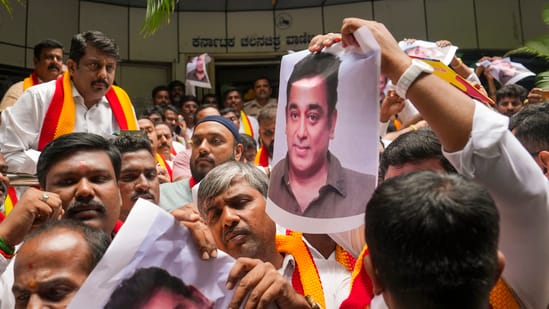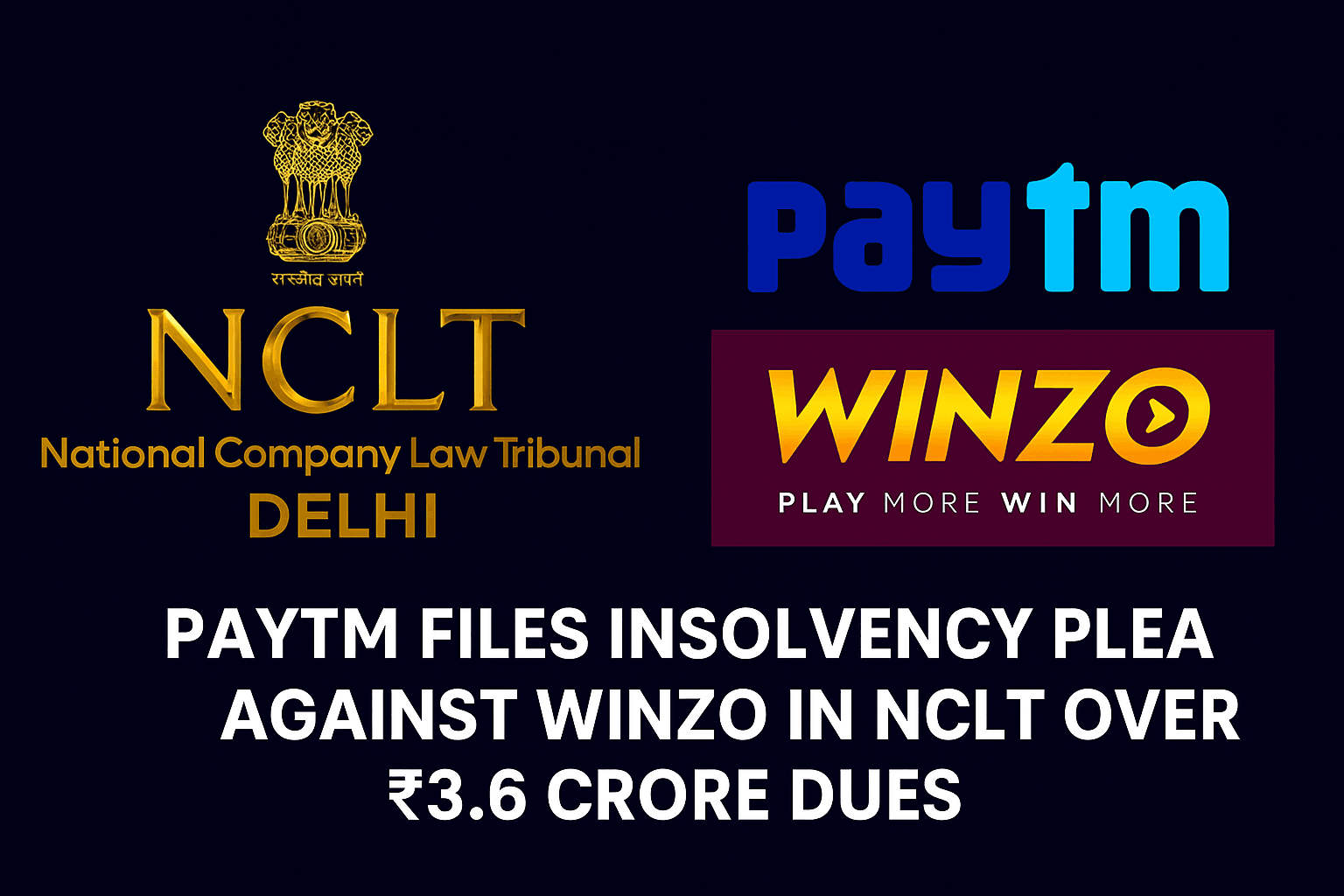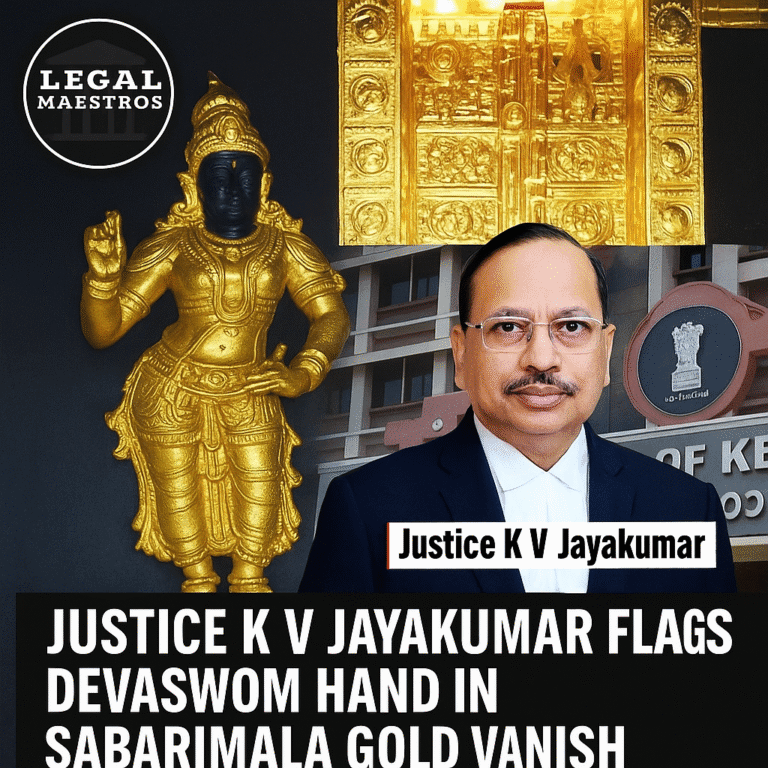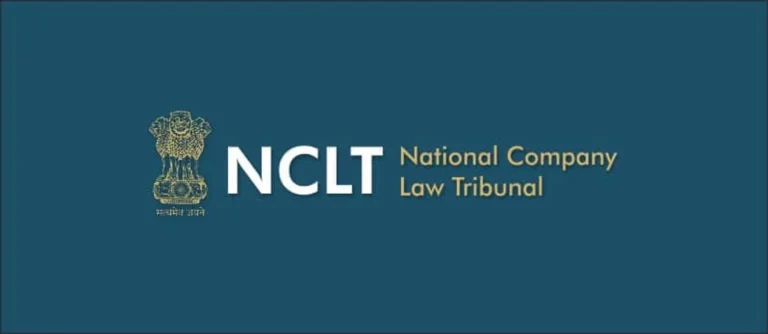
Karnataka’s Potential Ban on Thug Life: How Film Restrictions Could Challenge Freedom of Speech
Introduction
In light of the recent request made by the Karnataka government to prohibit the exhibition of the film “Thug Life,” discussions over the boundaries of creative freedom and the authority of the state have been recommenced.
On the other hand, some people believe that such a prohibition may be in violation of the right to free expression that is granted by Article 19(1)(a) of the Constitution.
The film, according to those who advocate for its prohibition, promotes illegal behavior and has the potential to provoke violence. Both the question of whether or not governments have the authority to censor films in advance on the basis of probable damage and the question of whether or not such action constitutes an unlawful overreach are at issue.
For any queries or to publish an article or post or advertisement on our platform, do call at +91 6377460764 or email us at contact@legalmaestros.com.
Background of the Proposal
An outlaw group in urban India is the subject of the crime drama “Thug Life,” which depicts the emergence and demise of the gang.
A local group in Karnataka voiced concerns that the film’s depiction of police corruption, graphic violence, and sympathetic treatment of criminals may potentially disturb public order. The film was released throughout the country without any issue, but it proved controversial in Karnataka.
Using the authority granted to it by the Cinematograph Act of 1952 and using Sections 196 and 300 of the Bharatiya Nyaya Sanhita (BNS), the state government has made it clear that it intends to prevent the film from being shown in theaters until it has been evaluated by a review committee.
For any queries or to publish an article or post or advertisement on our platform, do call at +91 6377460764 or email us at contact@legalmaestros.com.
Legal Framework Governing Film Certification
The Cinematograph Act stipulates that the only films that are permitted to be shown in public are those that have been approved by the Central Board of Film Certification (CBFC).
Under the provisions of Section 5B of the Act, state authorities have the authority to postpone certification on the basis that there is a potential for a disruption to public order, decency, or morality.
By outlawing speech that encourages hatred between groups or damages public sensibilities, the new provisions of the BNS complement this by imposing penalties.
For any queries or to publish an article or post or advertisement on our platform, do call at +91 6377460764 or email us at contact@legalmaestros.com.
Anything that is designed to promote violence or hate among social or religious groups is considered a criminal offense under Section 196 of the BNS. Speech that is designed to offend the religious sentiments or moral sensibilities of any class is subject to the penalties outlined in Section 300 of the Civil Rights Act.
For More Updates & Regular Notes Join Our Whats App Group (https://chat.whatsapp.com/DkucckgAEJbCtXwXr2yIt0) and Telegram Group ( https://t.me/legalmaestroeducators )
Landmark Judgments on Film Censorship
Indian courts have, for a very long time, been navigating the conflict that exists between censorship and free speech in the film industry. The Supreme Court of India ruled in the case of K.A. Abbas v. Union of India that cinema is a form of communication that is entitled to strong protection and that pre-certification edits need adequate justification.
For any queries or to publish an article or post or advertisement on our platform, do call at +91 6377460764 or email us at contact@legalmaestros.com.
Subsequently, in the case of S. Rangarajan v. P. Jagjivan Ram, the Supreme Court highlighted that the only things that may warrant restricting display are a “real danger” to public order.
A more recent case, Shreya Singhal v. Union of India, examined the legitimacy of ancillary measures, such as the banning of information on the internet. In this case, Section 66A of the Information Technology Act was invalidated because it was seen to be too broad.
Constitutional Safeguards and Reasonable Restrictions
For the sake of public order, decency, morality, or the security of the state, “reasonable restrictions” are permitted under Article 19(2), despite the fact that Article 19(1)(a) protects the right to freedom of speech and expression.
For any queries or to publish an article or post or advertisement on our platform, do call at +91 6377460764 or email us at contact@legalmaestros.com.
These exclusions have been read in a restrictive manner by the Supreme Court, which has insisted that the mere potential of disruption cannot be sufficient. As a result of the decision made by the Supreme Court in the case of Romesh Thappar v. State of Madras, speech may only be prohibited where it poses a direct and unavoidable threat.
In accordance with this criterion, any prohibition on “Thug Life” must demonstrate that there is a direct and unmistakable connection between the film’s content and impending violations of the law.
Impact of BNS Sections on Creative Expression
Fresh concerns have been raised as a result of the addition of Sections 196 and 300 to the BNS. According to Section 196 of the BNS, the encouragement of hostility by “word, sign, or electronic communication” is a criminal offense that may result in a maximum sentence of three years in jail.
For any queries or to publish an article or post or advertisement on our platform, do call at +91 6377460764 or email us at contact@legalmaestros.com.
Any intent to hurt moral or religious emotions is punishable under Section 300 of the Indian Penal Code.
There is a concern among filmmakers that these laws may restrict creative options, since directors and writers may choose to self-censor in order to avoid being prosecuted. Any story that is viewed as being critical of social structures or historic traditions might be targeted by authorities due to the ambiguous language used in both parts.
Comparative Perspectives on Film Regulation
Democracies all over the world struggle with the issue of film censorship. Since prior constraints are subject to stringent examination in the United States, the government is required to provide evidence of a compelling interest and narrowly circumscribed methods.
For any queries or to publish an article or post or advertisement on our platform, do call at +91 6377460764 or email us at contact@legalmaestros.com.
With the exception of situations in which the board goes beyond the scope of its legislative mission, certification in the United Kingdom is overseen by an independent board. A significant amount of discretion is placed in the hands of political officials under India’s mixed model, which consists of central certification in addition to state suspensions. This increases the likelihood of arbitrary bans.
Judicial Review and Anticipated Challenges
In the event that Karnataka goes forward with its plan to prohibit “Thug Life,” retailers and proprietors of cinemas that are adversely impacted are likely to file a petition with the High Court or the Supreme Court under Article 32 or 226.
In their argument, they would seek proof of impending public disruption, arguing that the state order is in violation of the precedents set by K.A. Abbas and Rangarajan. Legal documents such as affidavits, police reports, and expert evidence will be scrutinized by the courts.
For any queries or to publish an article or post or advertisement on our platform, do call at +91 6377460764 or email us at contact@legalmaestros.com.
It is also possible that they will take into consideration whether the certification procedure of the CBFC has already taken into account any potentially hazardous components, so rendering the participation of the state unnecessary and prohibited.
Broader Implications for Democracy
The fact that unfettered discussion and creative discovery are at the core of a thriving democracy would be reaffirmed if the challenge to the ban were to be successful. On the other hand, if the prohibition is maintained, other regimes could feel emboldened to censor films that criticize political leaders or expose facts that are unsettling.
The civic space might be reduced as a result of this tendency, which could expand beyond the realm of film and into the realms of literature, theater, and digital media. Furthermore, it has the potential to encourage filmmakers to pre-approve screenplays with local political players, which would be detrimental to the integrity of creative work.
For any queries or to publish an article or post or advertisement on our platform, do call at +91 6377460764 or email us at contact@legalmaestros.com.
Conclusion
In Karnataka, the ongoing conflict between individual liberties and the power of the state is exemplified by the controversy over whether or not to outlaw the film “Thug Life.” Constitutional law requires a clear reason that is founded on facts for any limitation of speech, notwithstanding the fact that the government has a legitimate interest in trying to avoid violence and promote communal peace.
The wide phrasing of Sections 196 and 300 of the BNS may have a chilling impact on creative creativity; yet, these sections highlight the developing attitude that the law takes to hate speech and public sensitivities.
The conclusion of any case that is brought before the courts will not only determine the destiny of a single film, but it will also delineate the boundaries of free expression within the cultural landscape of India.
For any queries or to publish an article or post or advertisement on our platform, do call at +91 6377460764 or email us at contact@legalmaestros.com.




![Research Assistantship @ Sahibnoor Singh Sindhu, [Remote; Stipend of Rs. 7.5k; Dec 2025 & Jan 2026]: Apply by Nov 14, 2025!](https://legalmaestros.com/wp-content/uploads/2025/11/Gemini_Generated_Image_s0k4u6s0k4u6s0k4-768x707.png)
![Karanjawala & Co Hiring Freshers for Legal Counsel [Immediate Joining; Full Time Position in Delhi]: Apply Now!](https://legalmaestros.com/wp-content/uploads/2025/11/Gemini_Generated_Image_52f8mg52f8mg52f8-768x711.png)
![Part-Time Legal Associate / Legal Intern @ Juris at Work [Remote]: Apply Now!](https://legalmaestros.com/wp-content/uploads/2025/11/ChatGPT-Image-Nov-12-2025-08_08_41-PM-768x768.png)
![JOB POST: Legal Content Manager at Lawctopus [3-7 Years PQE; Salary Upto Rs. 70k; Remote]: Rolling Applications!](https://legalmaestros.com/wp-content/uploads/2025/11/ChatGPT-Image-Nov-12-2025-08_01_56-PM-768x768.png)